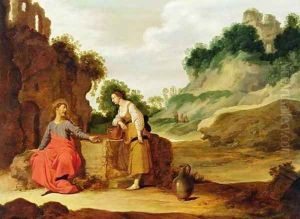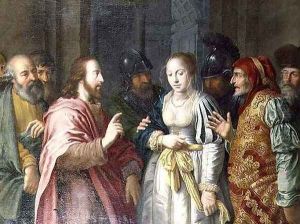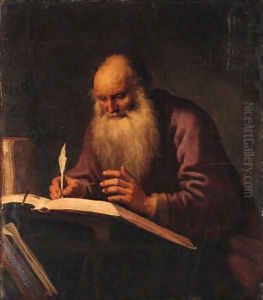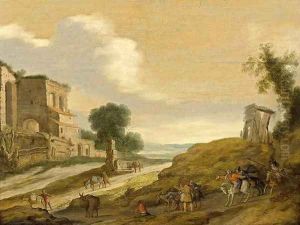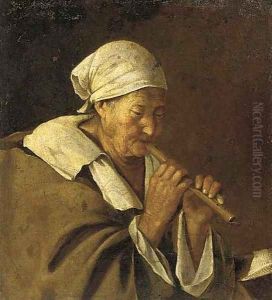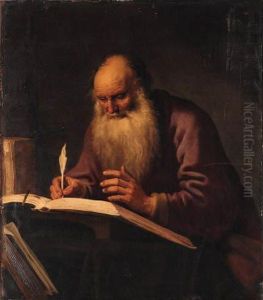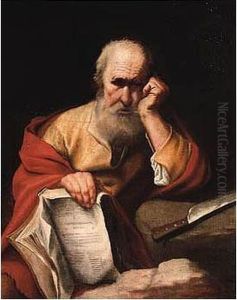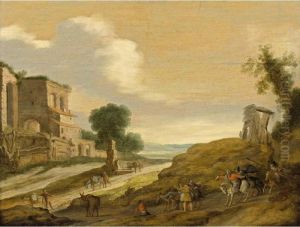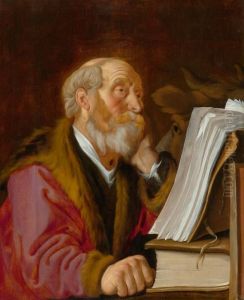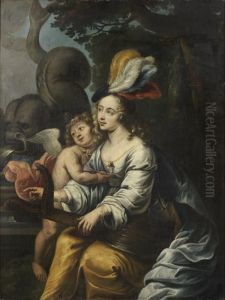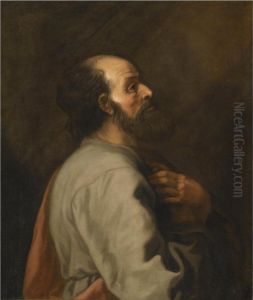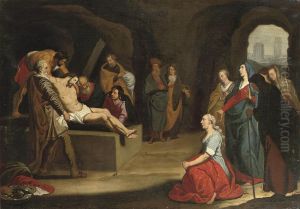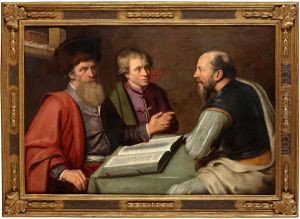Lambert Jacobsz or Jacobs Paintings
Lambert Jacobsz, sometimes referred to as Lambert Jacobs or Jacobsz, was a notable Dutch painter and art dealer of the early 17th century, born in 1598 in Amsterdam, Netherlands. His work and influence are intertwined with the Dutch Golden Age of painting, a period characterized by an incredible flourishing of the visual arts in the Netherlands. Lambert Jacobsz's contributions, although not as widely recognized as some of his contemporaries, played a significant role in the development of religious and historical painting in his time.
Jacobsz's early life and training are somewhat obscure, but it is known that he spent a significant part of his career in Leeuwarden, in the Dutch province of Friesland. This relocation played a crucial role in his development and influence as an artist and teacher. In Leeuwarden, Jacobsz not only established himself as a successful painter but also operated as an art dealer, bridging connections between the northern provinces of the Netherlands and the thriving art market in Amsterdam. His dual role as a painter and dealer provided him with a unique perspective on art, allowing him to foster a vibrant artistic community around him.
As a teacher, Lambert Jacobsz mentored several students who would go on to become prominent figures in Dutch art, including Jacob Adriaensz Backer and Govert Flinck. These pupils carried forward his stylistic traits and techniques, contributing to the dissemination of his influence across the Dutch Republic. Jacobsz's own style was characterized by a dynamic use of color and light, with a particular emphasis on religious themes and narratives. His works often depicted biblical scenes and figures, imbued with a sense of drama and emotion that was typical of the period's religious art.
Despite his significant contributions, Lambert Jacobsz's work was somewhat overshadowed by the towering figures of his era, such as Rembrandt. However, recent scholarship has begun to reassess his role and impact on the Dutch Golden Age of painting, recognizing him as an important figure in the network of artists and dealers that shaped the period's artistic landscape.
Lambert Jacobsz died in 1636 in Leeuwarden. While his death marked the end of a relatively short career, his legacy lived on through his students and the artworks he left behind. Today, Jacobsz's paintings can be found in various museums and collections, serving as a testament to his skill and contributions to the Dutch Golden Age.
